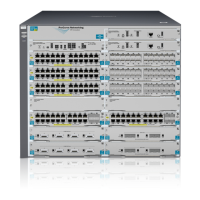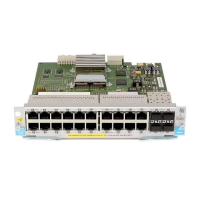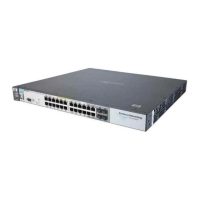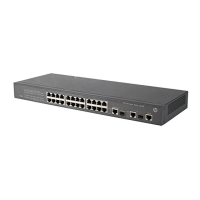7-12
QinQ (Provider Bridging)
Configuring QinQ
Enabling QinQ
By default, QinQ is disabled on the switch. To enable QinQ, the switch must
be put into either QinQ mixed vlan mode or QinQ svlan mode by issuing one
of the following commands from configuration mode on the CLI.
Setting up S-VLANs
S-VLANs can be created via the CLI using the svlan <vid> command.
Note When QinQ is disabled, all VLANs must be C-VLANs. When QinQ is enabled
in svlan mode, all VLANs must be S-VLANs. When QinQ is enabled in mixed
vlan mode, VLANs can be configured as either C-VLANs or S-VLANs. For more
on S-VLAN configuration constraints, refer to the restrictions on page 7-8.
Syntax: qinq mixedvlan <tag-type[tpid]>
From config mode, globally enables QinQ mixed mode, an environ-
ment that supports both S-VLAN and C-VLAN traffic on the same
device. This command requires a reboot to take effect.
Default: Disabled.
Syntax: qinq svlan <tag-type[tpid]>
From config mode, globally enables QinQ svlan mode, an S-VLAN
only environment that supports supports port-based or s-tagged
interfaces of the standard. Requires a reboot to take effect.
Default: Disabled.
Syntax: svlan < vid | ascii-name-string >
[no] svlan < vid >
If < vid > does not exist in the switch, this command creates a port-
based S-VLAN with the specified < vid >. If the command does not
include options, the CLI moves to the newly created S-VLAN
context. If you do not specify an optional name, the switch assigns
a name in the default format: svlann where n is the < vid > assigned
to the S-VLAN. If the S-VLAN already exists and you enter either
the vid or the ascii-name-string, the CLI moves to the specified
S-VLAN’s context.
The [no] form of the command deletes the S-VLAN as follows:
• If one or more ports belong only to the S-VLAN to be deleted, the
CLI notifies you that these ports will be moved to the default
VLAN and prompts you to continue the deletion. For member
ports that also belong to another S-VLAN, there is no “move”
prompt.
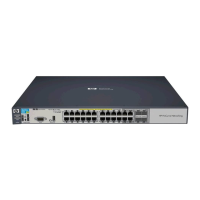
